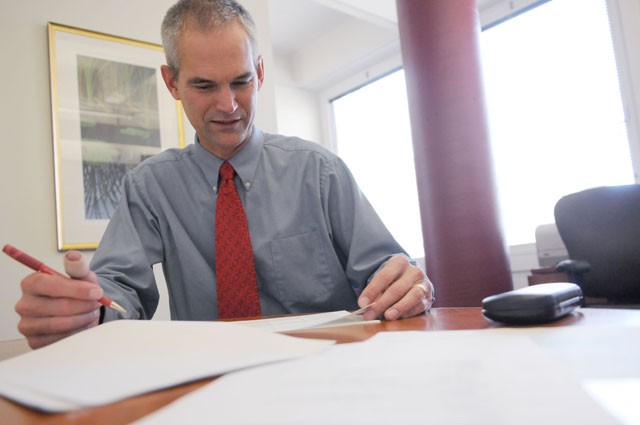Often overlooked and underestimated, community colleges have emerged as the largest and fastest growing branch of American higher education.
They also play an integral role in President Barack ObamaâÄôs plan for the country to reclaim the worldâÄôs highest college graduation rate by 2020.
The U.S. Department of Education projects that 8 million additional graduates are needed to reach this goal, and 5 million of them will come from the countryâÄôs 1,200 community colleges.
Locally, the Minnesota State Colleges and Universities system saw its fifth consecutive fall enrollment increase with more than 200,000 students attending the systemâÄôs 32 institutions.
MnSCU also recently received an $800,000 grant from the Indianapolis-based Lumina Foundation for the Returning Adults to Progress in Degree Completion Program.
The grant is one of 19 given this fall by the Lumina Foundation, which has its own goal of increasing the number of Americans with college degrees from 40 percent to 60 percent by 2025.
The grant will fund a statewide outreach campaign that will offer information on how dislocated workers, veterans and other adults with situational barriers such as family responsibilities or heavy work schedule, complete degrees.
MnSCU records have already identified about 160,000 former students who have completed 15 credits in the system within the past 10 years.
The campaign is expected to attract an additional 10,000 returning students to complete either a two- or four-year degree.
âÄúOur campuses are ready for growth,âÄù Melinda Voss, spokeswoman for MnSCU, said, adding that part of the grant is to train faculty in assessing credit for prior learning.
That means the schools will give credit for skills returning students have gained in the work force, helping them avoid sitting in a class where theyâÄôre wasting their time.
âÄúIt will also ultimately speed up graduation,âÄù Voss said.
With 130 online course and accelerated programs with flexible start dates, MnSCU aims to make graduating accessible and flexible for all students.
Though the spotlight is overwhelmingly on the benefits of community college, the University of MinnesotaâÄôs College of Continuing Education has a similar mission and could feel the effect from MnSCUâÄôs gain.
âÄúThereâÄôs certainly overlap between what the University of Minnesota does and what MnSCU does,âÄù CCE Associate Dean Robert Stine said. âÄúWe have these programs set up. The curriculum is there. For us, itâÄôs very much a matter of doing the marketing and making sure people are aware of them and they find us âĦ How critical [is it] for us to have a grant to do that? IâÄôm not sure, but itâÄôs something weâÄôll visit once we get there.âÄù
CCE did not apply for a Lumina Foundation grant this fall. Stine said CCE is able to offer many of the same flexibilities as MnSCU and has thus far been able to keep an edge.
âÄúSome people are attracted here simply because a degree from here means something out in the market place, or means something to them personally,âÄù he said. âÄúAlso, since weâÄôre a comprehensive university, the choices that students have is probably larger here than at most of the four-year MnSCU schools.âÄù
Voss acknowledged the similarities between CCE and MnSCU and said both institutions have a vital in improving MinnesotaâÄôs graduation rate.
âÄúMinnesota has such a high quality of life because public, community and private colleges are all able to offer high quality education,âÄù she said. âÄúWe all need to make sure a high standard is consistent throughout all institutions.âÄù

Robert Stine, the associate dean for the College of Continuing Education, works in his office on the St. Paul campus Tuesday.
MnSCU receives $800k grant for grad rates
The Lumina Foundation wants 60 percent of Americans to have college degrees by the year 2025.
by Adam Daniels
Published October 13, 2010
0
More to Discover







